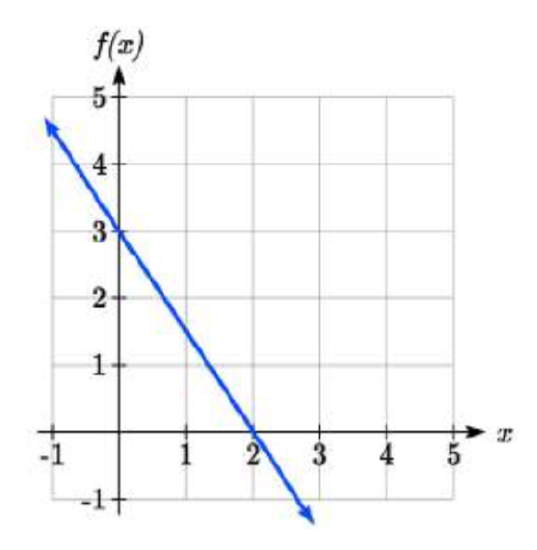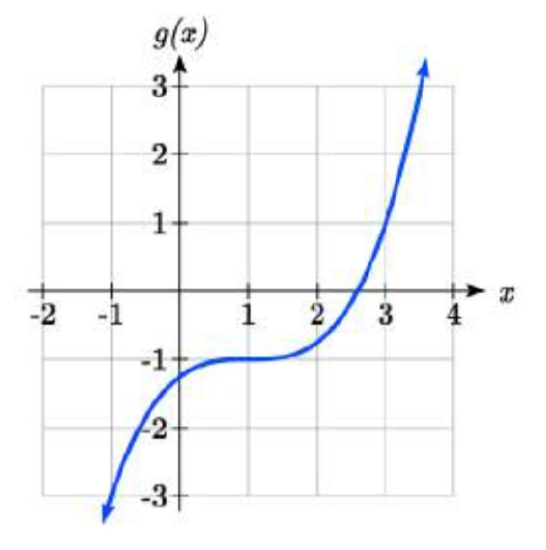1.6E: Inverse Functions
( \newcommand{\kernel}{\mathrm{null}\,}\)
Assume that the function f is a one-to-one function.
1. If f(6)=7, find f−1(7)
2. If f(3)=2, find f−1(2)
3. If f−1(−4)=−8, find f(−8)
4. If f−1(−2)=−1, find f(−1)
5. If f(5)=2, find (f(5))−1
6. If f(1)=4, find (f(1))−1
7. Using the graph of f(x) shown

a. Find f(0)
b. Solve f(x)=0
c. Find f−1(0)
d. Solve f−1(x)=0
8. Using the graph shown

a. Find g(1)
b. Solve g(x)=1
c. Find g−1(1)
d. Solve g−1(x)=1
9. Use the table below to find the indicated quantities.
| x | 0 | 1 | 2 | 3 | 4 | 5 | 6 | 7 | 8 | 9 |
| f(x) | 8 | 0 | 7 | 4 | 2 | 6 | 5 | 3 | 9 | 1 |
a. Find f(1)
b. Solve f(x)=3
c. Find f−1(0)
d. Solve f−1(x)=7
10. Use the table below to fill in the missing values.
| t | 0 | 1 | 2 | 3 | 4 | 5 | 6 | 7 | 8 |
| h(t) | 6 | 0 | 1 | 7 | 2 | 3 | 5 | 4 | 9 |
a. Find h(6)
b. Solve h(t)=0
c. Find h−1(5)
d. Solve h−1(t)=1
For each table below, create a table for f−1(x).
11.
| x | 3 | 6 | 9 | 13 | 14 |
| f(x) | 1 | 4 | 7 | 12 | 16 |
For each function below, find f−1(x)
13. f(x)=x+3
14. f(x)=x+5
15. f(x)=2−x
16. f(x)=3−x
17. f(x)=11x+7
18. f(x)=9+10x
For each function, find a domain on which f is one-to-one and non-decreasing, then find the inverse of f restricted to that domain.
19. f(x)=(x+7)2
20. f(x)=(x−6)2
21. f(x)=x2−5
22. f(x)=x2+1
23. If f(x)=x3−5 and g(x)=3√x+5, find
a. f(g(x))
b. g(f(x))
c. What does this tell us about the relationship between f(x) and g(x)?
24. If f(x)=x2+x and g(x)=2x1−x, find
a. f(g(x))
b. g(f(x))
c. What does this tell us about the relationship between f(x) and g(x)?
- Answer
-
1. 6
3. -4
5. 1/2
7a. 3
b. 2
c. 2
d. 211.
x 1 4 7 12 16 f−1(x) 3 6 9 13 14 13. f−1(x)=x−3
15. f−1(x)=−x+2
17. f−1(x)=x−711
19. Restricted domain x≥−7, f−1(x)=√x−7
21. Restricted domain x≥0, f−1(x)=√x+5
23a. f(g(x))=(3√x+5)3−5=x
b. g(f(x))=3√x3−5+5=x
c. This means that they are inverse functions (of each other)

